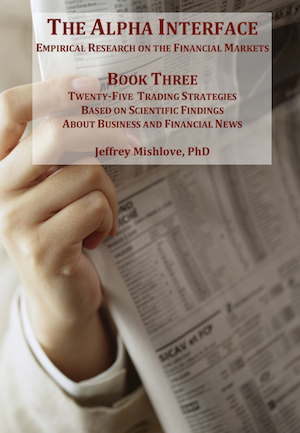The number of good news events reported in the business press is very similar to the number of bad news events. However, Green, Hand, and Penn (2012) – from Pennsylvania State University, the University of North Carolina, and Florida State University – documented that bad news events were more wildly disseminated after they were initially reported than were good news events.
They hypothesized that the bad news dissemination bias occurred because business journalists, like their popular press counterparts, responded to “if it bleeds, it leads” incentives to increase readership. Consistent with this hypothesis, they found the bad news dissemination bias was greatest for companies and events that were least likely to attract readers’ attention (i.e., small firms and less investor-relevant events), and for which competition between journalists was high (i.e., firms with greater amounts of recent press coverage).
Of course, the major trend over the past decade concerning trading the news is the focus on algorithms for analyzing the news and making trading decisions. Stephane Gagnon (2012), of the Université du Québec, Canada, developed a taxonomy with five different categories of news trading algorithms. In summary they are listed below:
- News classification – identification of relevant keywords and attribution of likely descriptive classes.
- Topic modeling – associates similar content to classes.
- Sentiment scoring – keywords used to pinpoint news meaning and emotional tone.
- Bag-of-words forecasting – news summarized as vectors of keyword features from a prepared dictionary.
- Semantic recommendation – linking complex semantic relations to an understanding of the nature of the reality being described.
Gagnon proposed a rules-based, semantic reasoning engine that would ultimately incorporate all of these categories into a single system. This trend toward greater complexity appears to be the direction in which advanced news-based trading is moving. The research studies summarized in Book Three of The Alpha Interface series have been selected because they offer empirical evidence suggesting viable strategies for traders and investors.

